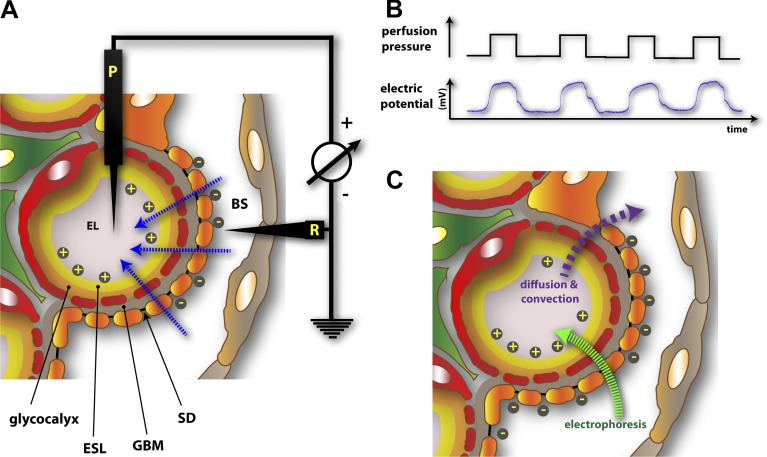Figure 4.
Electrokinetic model of renal filtration. (A) Experimental setup used to demonstrate the existence of a flow-dependent electrical potential (streaming potential) across the GFB in salamander (N. maculosus) glomeruli (Hausmann et al., 2010). P, potential electrode; R, reference electrode. Small ions, due to differential interaction with the negatively charged GFB, create a net gradient of charges measurable as a streaming potential (blue arrows), making the endothelial lumen (EL) more positive than the Bowman’s space (BS). (B) Filtration pressure dependence of glomerular streaming potential. (C) Retrograde electrophoretic field created by streaming potentials. Due to streaming potentials, macromolecules encounter a dynamic electrophoretic field (green arrow) that is opposite to that of diffusive and convective fluxes (purple arrow). Albumin, a negatively charged macromolecule, would not only encounter size-dependent exclusion by the GFB but would effectively be electrophoresed away from the GFB during the course of active filtration.

